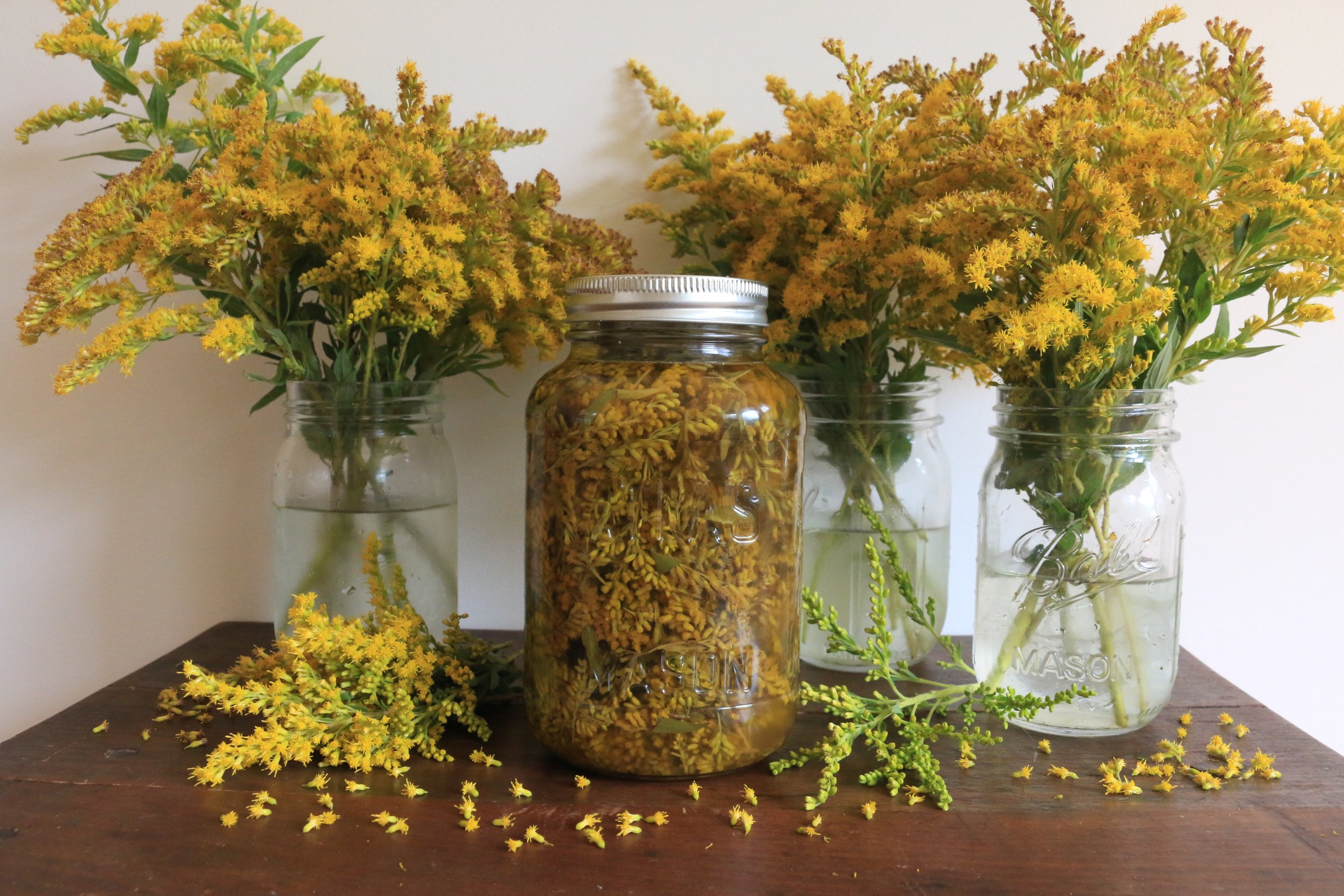Imbued in modern day green and kitchen witchery is the art of brewing potions. Potion making isn’t limited to the world of Harry Potter and magical fantasy, but is based in set of methods used in the real world to extract the medicinal properties of plants. Infusions, extractions, tinctures, and decoctions are a few of these methods, and they all involve bubbling, broiling, and brewing and will hopefully lead to fewer (physical and mental) toils and troubles. The magical properties of different plant parts must be extracted in specific ways so as not to destroy the delicate oils, alkaloids and compounds charged with medicinal benefits. Different potion methods optimize different plant properties and the delivery method can also have an effet on how they’re processed by the body. But don’t worry, these real life potions seem a lot easier to whip up than the Professor Snape variety, and while the medicinal plant based version won’t turn you into an animal, they can have some pretty powerful transformative effects. Potions extracted from plants that balance mood, increase energy, cut appetite, detoxify the blood, kidneys and liver, balance hormones, increase fertility… And once you have the brewing basics down, you can extract and optimize the benefits from any medicinal plant.
Infusions
Plant parts: Flowers, leaves, stamens
Ingredients: Water + Plants
Method: An infusion is basically like making tea. The leaves, flowers and stamens (pollen stems) of plants are delicate and would be destroyed if boiled directly in the water. To preserve these benefits, add plants to a mug or jar, then boil water and pour it over plants. Cover with a top or small plate. Leave the plants to infuse for at least 15/20 minutes. They can also be left to infuse overnight to create an even stronger (although sometimes more bitter) potion. Strain the plants and drink as you would a tea.
Tinctures
Plant Parts: All
Ingredients: high proof alcohol/vegetable glycerine/apple cider vinegar/wine
Method: A tincture uses alcohol, vinegar or vegetable glycerine to extract plant properties. Add plants to a glass mason jar, pour a few tablespoons of boiling water over the plants to help “open them up” and prep them for the extraction. Dry herbs follow a 1:5 plant:liquid ratio and fresh herbs follow a 1:2 plant:liquid ratio. Fill up the rest of the jar with high proof alcohol (I like organic sugar cane alcohol or potato vodka), apple cider vinegar or organic vegetable glycerine. Seal the jar and leave the tincture to infuse for at least 2 or 3 weeks. Agitate the mixture every few days and try to keep it in a warm place. When the tincture has infused to your desired strength, strain out the plants and add the liquid back to the jar, keep away from direct light and use as needed. The longer you leave the tincture to infuse, the stronger the potion… but making antiviral echinacea tincture in October might not make it more than a month come the onset of winter illnesses. These are different benefits for each of the extraction liquids:
Alcohol:
pros: powerful solvent for extracting medicinal plant properties, good at extracting plant alkaloids (organic compounds that house many medicinal benefits), preserves tincture indefinitely, inactivated enzymes that could cause the tincture to break down, mixes well with glycerine and water
cons: not good at extracting resins, and can destroy certain compounds, and can be problematic for those with alcohol intolerance
Vegetable glycerine:
pros: good at extracting resins, non alcoholic
cons: not as strong a solvent as alcohol and might lead to slightly weaker tinctures
Apple Cider Vinegar:
pros: brings the added benefits of ACV like neutralizing blood pH, lowering blood sugar and cholesterol and offering antibacterial effects.
cons: not as strong as alcohol in extracting most medicinal compounds and doesn’t technically have an indefinite shelf life like alcohol
Decoctions
Plant parts: Stems, roots, bark
Ingredients: Water + Plants
Method: Use about 1/4 ounce of dry herb (7 grams) per cup of water. Add bark, roots or stems of plants to a saucepan of cold water, bring to a boil, cover and let simmer for at least 15/20 minutes. If you’re using larger pieces of bark and roots, you can boil the potion for closer to an hour. Take the pan off the stove, and let it sit for an additional 20 minutes, covered. Strain the potion using only the liquid.
Which to choose?
Try all! Experiment with your medicinal potions until you find what works. I personally do a combination. When I want to create powerful immune boosting potions (like an echinacea + reishi + calendula mix) to get me through winter, I go for tinctures. It’s the kind I take for a week or two to balance an issue or prevent/heal an illness. Alcohol tinctures are one of the strongest delivery methods and pass more easily into the bloodstream instead of being partially destroyed by the digestive tract (as often happens with vitamins). I do a mixture of alcohol, glycerine, and ACV tinctures to switch it up (I hate alcohol and can only stomach so much). When it comes to potions that I like to integrate into my life more regularly, like those for sleep (chamomile), calming (valerian root), nervous system support (passionflower), and fertility (red raspberry leaf), I like to make infusions or decoctions and sip them at night before bed as part of a winding down ritual.



